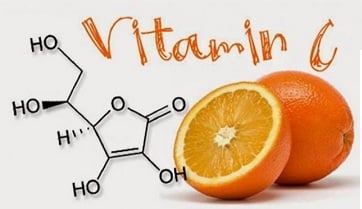ASKORBİK ASİT 100 GRAM SAF C VİTAMİNİ TOZ
E300 FOOD GRADE ASCORBIC ACID 100 GRAM VITAMIN C Ascorbic Acid (Vitamin C) E300 L-ascorbic acid (3-keto-L-gulofuranolactan), also called vitamin C, which is an indispensable component for healthy development, teeth, bones and skin; It is a carbohydrate-like chemical substance that plays a role in metabolic functions such as iron absorption, collagen synthesis, maintaining the structural strength of blood vessels, metabolism of some amino acids, and hormone synthesis and secretion of the adrenal glands . Vitamin C, also known as ascorbic acid, is a water-soluble vitamin that has many functions. Most animals and plants can produce ascorbic acid per 100 grams of vitamin C from glucose. Humans, some fruit bats, guinea pigs, and human-like primates must obtain it from food because they cannot reproduce. It is a monosaccharide derivative and is structurally similar to glucose and other six-carbon monosaccharides. They are colorless, white, rectangular crystals. It has a very light special smell. It has a sour taste and an acid reaction. It is optically active. It rotates polarized light to the right. It is very difficult to dissolve in acetone. It is insoluble in ether, petroleum ether, benzene, chloroform and oils. Chemically, vitamin C is the left-rotating enantiomer of ascorbic acid. Commercial vitamin C generally consists of ascorbic acid 100 grams of vitamin C crystals or calcium or sodium salts of ascorbic acid. It is found in very high concentrations (millimolar and above) in the aqueous parts of many animal tissues such as the spinal cord, lung and eye. The role of ascorbic acid in biological systems, the function and requirements of ascorbic acid 100 grams of vitamin C should be considered together with two factors: The first is the biochemical properties of vitamin C, including its ability to act as both an antioxidant and an enzyme cofactor. The second is its pharmacokinetics, which includes intestinal absorption, serum concentration, cellular distribution, utilization and excretion. It is found in all living tissues. Ascorbic acid, which is widely found in nature, is 100 grams of vitamin C. The richest sources of this vitamin are fresh fruits and vegetables. Among the fruits, the ones containing the most are; lemon, orange, grapefruit, kiwi, pineapple, strawberry and currant. Apples, pears and plums contain smaller amounts. It is rich in these fruits, especially the outer parts (skin) of citrus fruits (lemon, orange, grapefruit), kiwi and tomato. Vegetables, especially rosehip, cauliflower, cabbage, spinach, onion, pepper, radish, cress, parsley and Jerusalem artichoke are the richest sources. ASCORBIC ACID 100 grams VITAMIN C |



